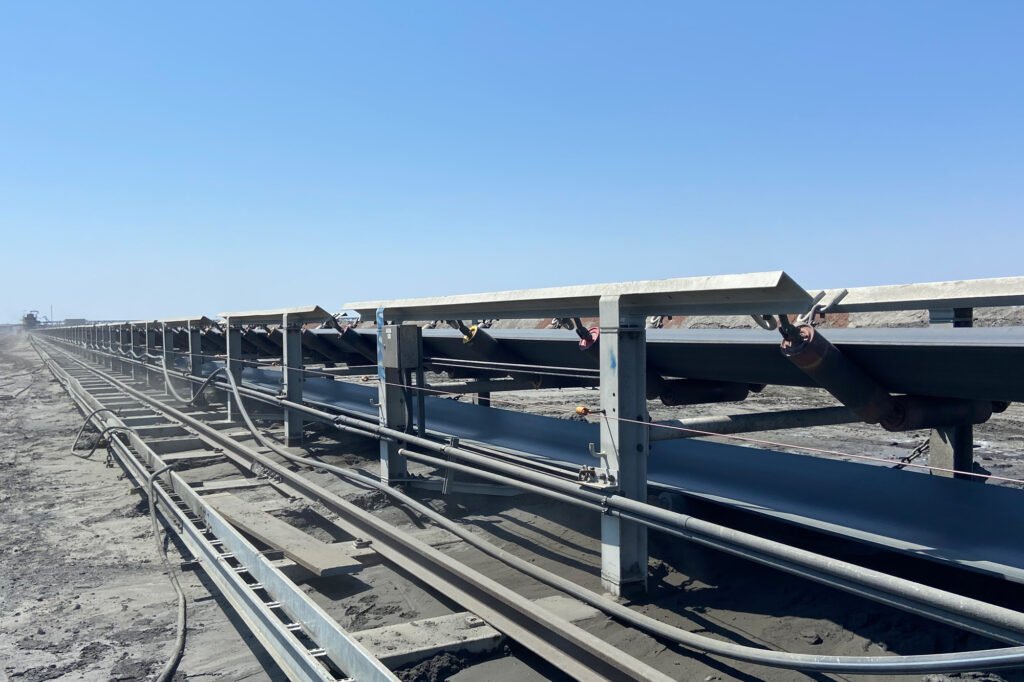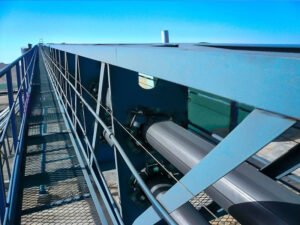
AS 1332-2000 Conveyor Belting – Textile Reinforced
The Australian Standard AS 1332 outlines the specifications and requirements for conveyor belts, ensuring their safety, performance, and reliability in various industries. In this article, we will explore key aspects of AS 1332 and its significance in the conveyor belt industry.
1. Purpose of AS 1332: AS 1332 serves as a comprehensive guideline for manufacturers, suppliers, and users of conveyor belts. Its primary objective is to establish a set of standardized criteria that ensure the design, construction, and performance of conveyor belts meet the necessary safety and quality standards.
2. Conveyor Belt Classification: The standard classifies conveyor belts based on their maximum allowable working tension. This categorization helps users select the appropriate belt for specific applications, considering factors such as load capacity and operational requirements.
3. Construction and Materials: AS 1332 provides detailed specifications for the construction and materials used in conveyor belts. This includes information on the composition of different layers, the type of rubber or polymer used, and the strength of reinforcements. By adhering to these guidelines, manufacturers can produce belts that withstand the demands of diverse industries.
4. Safety Requirements: Safety is a paramount concern in conveyor belt design and operation. AS 1332 outlines safety requirements, including measures to prevent fire hazards, static electricity buildup, and the use of materials that comply with flame resistance standards. These provisions contribute to creating a safer working environment in industries where conveyor belts are prevalent.
5. Testing and Performance Evaluation: To ensure the reliability of conveyor belts, AS 1332 establishes testing procedures that evaluate aspects like tensile strength, elongation at break, and adhesion between different layers. These tests help verify whether a conveyor belt meets the specified standards for durability and performance.
6. Compliance and Certification: Manufacturers and suppliers must demonstrate compliance with AS 1332 by subjecting their conveyor belts to rigorous testing and quality control processes. Obtaining certification signifies that a product meets the required standards, instilling confidence in users about the reliability and safety of the conveyor belt.
7. Ongoing Revisions and Updates: Standards, including AS 1332, are subject to periodic reviews and updates to incorporate advancements in technology, materials, and industry practices. It is essential for stakeholders to stay informed about the latest revisions to ensure the continued adherence to the most current standards.
8. Global Relevance: While AS 1332 is specific to Australia, its principles align with international standards for conveyor belts. Manufacturers and users around the world often consider AS 1332 guidelines when dealing with Australian suppliers or when seeking consistency in global conveyor belt standards.
In conclusion, AS 1332 plays a crucial role in the conveyor belt industry by setting forth comprehensive guidelines for the design, construction, and performance of these essential components. Adherence to these standards ensures the safety, reliability, and efficiency of conveyor belts in diverse industrial applications. As technology and industry practices evolve, continuous updates to standards like AS 1332 contribute to the ongoing improvement of conveyor belt safety and performance.





